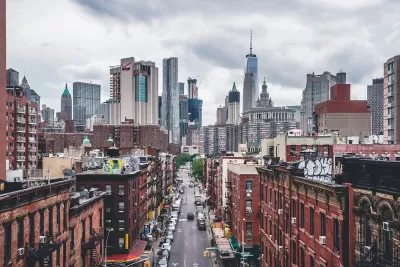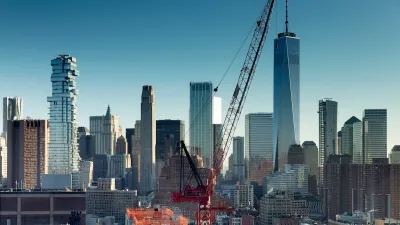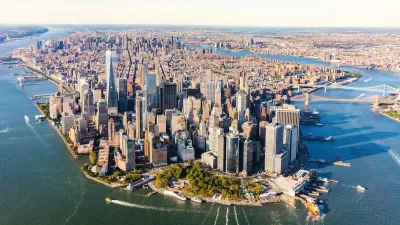Cities like Austin and Minneapolis are making major changes to their zoning codes to encourage housing construction, but New York’s proposed reforms are far less ambitious.

In a piece for The City, Samantha Maldonado explains how cities like Minneapolis and Austin have made far more ambitious zoning reforms than New York City in their efforts to encourage more housing development and bring down housing costs for their residents.
According to Maldonado, “Some parts of the original City of Yes proposal were from the onset less ambitious than elsewhere, while changes made as part of negotiations further scaled back the agenda.” The city says the plan could yield up to 80,000 new housing units, but modifications requested by City Council members will mitigate growth in some low-density neighborhoods, prompting criticism that the alterations ‘run counter to the initial promise of City of Yes to create “a little bit more housing in every neighborhood.’”
The proposed City of Yes plan would not allow duplexes or triplexes on lots zoned for single-family homes, while Minneapolis does. Minneapolis, Austin, Buffalo, and other cities have also scaled back or eliminated parking requirements, further reducing the cost of construction. While Columbus, Ohio allows buildings up to 16 stories tall near transit, New York’s plan would limit transit-adjacent building height to five stories in some neighborhoods.
FULL STORY: How Minneapolis and Austin Outdid New York City in the Quest to Enable More Housing

Alabama: Trump Terminates Settlements for Black Communities Harmed By Raw Sewage
Trump deemed the landmark civil rights agreement “illegal DEI and environmental justice policy.”

Planetizen Federal Action Tracker
A weekly monitor of how Trump’s orders and actions are impacting planners and planning in America.

The 120 Year Old Tiny Home Villages That Sheltered San Francisco’s Earthquake Refugees
More than a century ago, San Francisco mobilized to house thousands of residents displaced by the 1906 earthquake. Could their strategy offer a model for the present?

LA’s Tree Emergency Goes Beyond Vandalism
After a vandal destroyed dozens of downtown LA trees, Mayor Karen Bass vowed to replace them. Days later, she slashed the city’s tree budget.

Sacramento Leads Nation With Bus-Mounted Bike Lane Enforcement Cameras
The city is the first to use its bus-mounted traffic enforcement system to cite drivers who park or drive in bike lanes.

Seattle Voters Approve Social Housing Referendum
Voters approved a corporate tax to fund the city’s housing authority despite an opposition campaign funded by Amazon and Microsoft.
Urban Design for Planners 1: Software Tools
This six-course series explores essential urban design concepts using open source software and equips planners with the tools they need to participate fully in the urban design process.
Planning for Universal Design
Learn the tools for implementing Universal Design in planning regulations.
Ada County Highway District
Clanton & Associates, Inc.
Jessamine County Fiscal Court
Institute for Housing and Urban Development Studies (IHS)
City of Grandview
Harvard GSD Executive Education
Toledo-Lucas County Plan Commissions
Salt Lake City
NYU Wagner Graduate School of Public Service





























